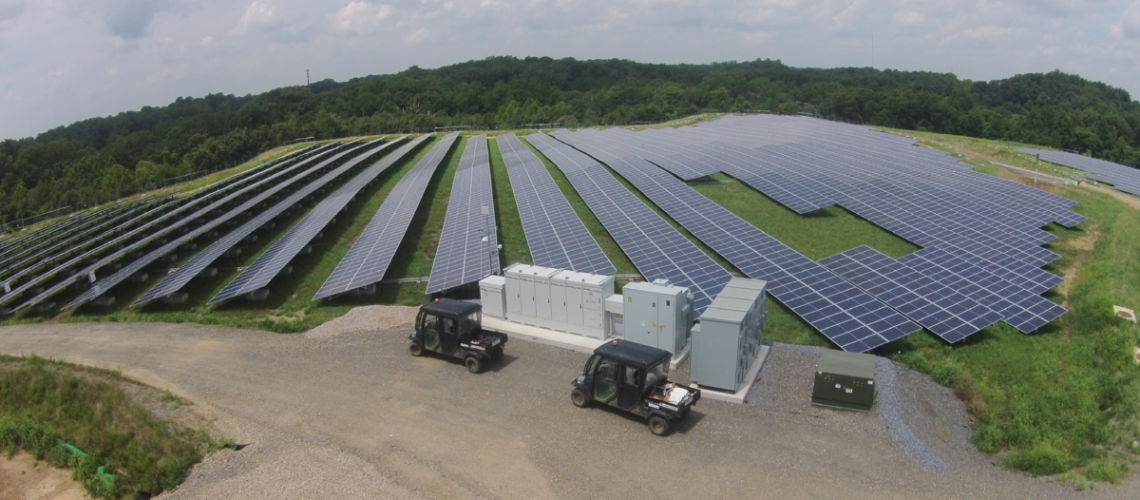It is now the 10th U.S. state to set a goal for energy storage procurement.
Legislators in the state of Maryland have voted to approve HB 910, establishing a target to install energy storage to support the proliferation of renewable energy statewide.
The target sets a goal of 750 MW by year’s end 2027, 1.5 GW through 2030, and 3 GW through 2033. Battery durations were not set in the legislation, however, typical PJM-interconnected storage projects often operate batteries with four-hour durations. The legislation includes electrochemical (battery) storage, thermal storage, virtual power plants, and hydrogen-based storage.
“Getting clean capacity is the next chapter in decarbonization, especially for restructured states,” said Jason Burwen, vice president of energy storage at the American Clean Power Association (ACP).
The target follows with recommendations made by ACP, which suggested the state will require 2.5 GW to 3.6 GW to meet the growing share of renewable energy on the grid. It said that the buildout would lead to a net system cost savings of $74 million to $100 million by 2033.
Last year, Maryland increased its economy-wide emissions reduction target from 40% to 61% as compared to 2006 levels. It also targets carbon-neutrality by 2045.
“As storage is critical to meeting our nation’s emissions and energy goals, Maryland’s passage of this energy storage bill signals important progress toward building clean energy capacity,” said Moira Cyphers, eastern region state affairs director, ACP.
The state also passed legislation to require the Public Service Commission to develop a cost-effective procurement program for energy storage.
HB 910 now heads to Governor Wes Moore’s desk to be signed into law.
Solar friendly laws
In February, Maryland legislators introduced a bill to boost residential solar adoption. Sponsored by Maryland Senator Brian J. Feldman and Delegate Lily Qi, Senate Bill 664 and House Bill 1239, would increase Maryland’s residential clean energy grant from $1,000 to $5,000 to boost adoption of rooftop solar and create local clean energy jobs.
This bill would fund rooftop solar grants through fees and penalties paid by companies that do not meet the state’s clean energy requirements, minimizing the cost to taxpayers and ensuring those fees are directed toward promoting renewable energy. It would also enhance clean energy incentives for low- and moderate-income residents, as well as those living in overburdened and underserved communities.
“While we’ve seen growth in the utility scale solar market in Maryland since the Maryland Clean Energy Jobs Act passed in 2019, residential solar continues to lag behind despite playing a critical role in meeting the state’s climate goals,” said Ed Merrick, chair of MRSC. “We need to rebuild this industry and do it in a way that includes all Marylanders by leveraging our existing built infrastructure. Incentivizing the installation of residential rooftop solar through the state’s existing grant program will help make clean energy more accessible and affordable for all Maryland residents, regardless of their financial status.”
In June 2022, the state passed a pair of community solar bills. HB 1039 and HB 440 create tax incentives for the development of agrivoltaic community solar projects which serve low- and moderate-income customers on rooftops, brownfields, landfills, and clean fills.
HB 1039, exempts community solar projects from both county and municipal corporate property taxes, so long as the 50% of the electricity generated by the projects go to serve low- to moderate-income individuals and families at a rate which is at least 20% lower than the base electricity rate that these customers would be paying otherwise.
As it stands, 30% of the pilot program capacity is still set aside for low-to-moderate income customers wishing to participate and another 30% is set aside for project development on brownfield sites.
HB 440 expanded the maximum capacity of a permitted community solar project from 2 MW to 5 MW, while also reducing the land requirements for siting projects. This provision pertains to projects developed on multiple, contiguous lots, rather than opening up new types of land zones for development.
“HB 1039 and HB 440 send a signal to the community solar industry that Maryland welcomes the private sector as a way to inject capital into grid modernization and build a new energy market that can bolster the state’s economy,” said Leslie Elder, Mid-Atlantic director for the Coalition for Community Solar Access. “We thank the Maryland General Assembly for passing these bills and Governor Hogan for his support.”






